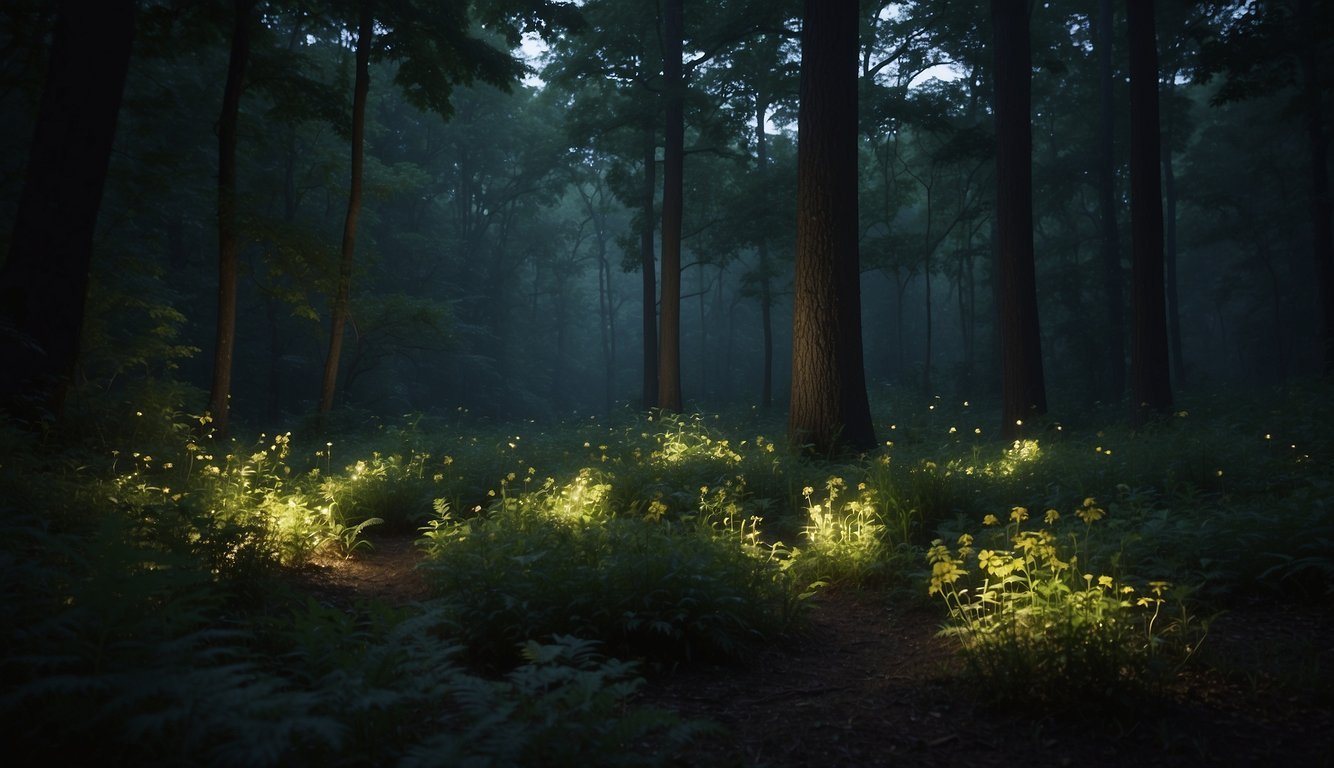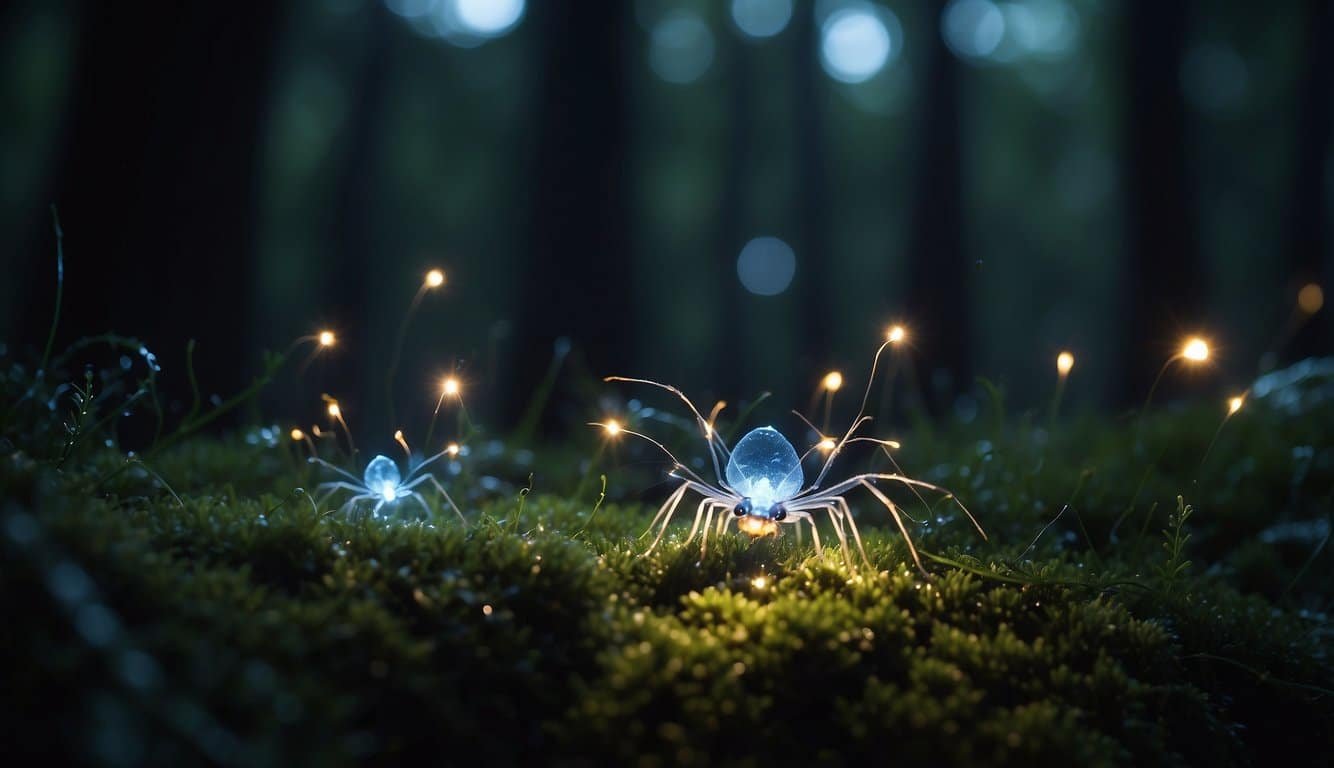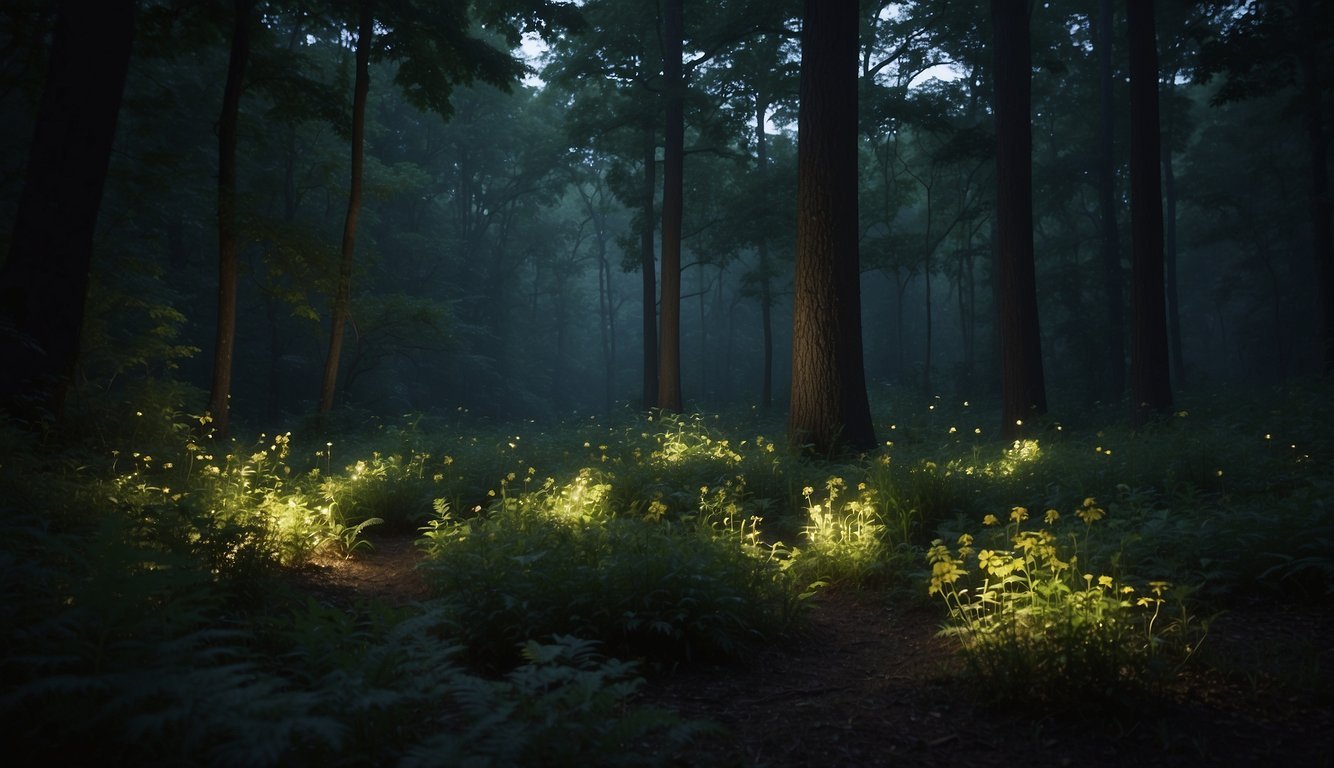Understanding Lightning Bugs
Lightning bugs, also known as fireflies, are one of nature’s most captivating light shows. These insects belong to the family Lampyridae and are revered for their ability to produce light through a process called bioluminescence.
Life Cycle and Development
The life cycle of lightning bugs is a four-stage process known as complete metamorphosis, encompassing egg, larval, pupal, and adult stages. After mating, a female firefly lays her eggs in a moist environment, which is crucial for the eggs’ survival. The larvae, also called glow-worms, are largely predatory and continue to develop, feeding on other insect larvae and snails, which is pivotal for their growth.
During the larval stage, which can last one to two years depending on the species, these insects already exhibit their characteristic bioluminescent glow. This glow is thought to deter predators or signal distaste. As they enter the pupal stage, they undergo a transformation that leads to the emergence of winged adults ready for reproduction. Adults have a much shorter lifespan, often living only long enough to mate and lay eggs. This fascinating transformation can be observed throughout various habitats, including forests, fields, and marshes.
Characteristics of Bioluminescence
Bioluminescence is the hallmark of fireflies, setting them apart from other beetles. This light is produced through a chemical reaction involving luciferin, oxygen, and the enzyme luciferase in specialized cells called photocytes, located in the firefly’s abdomen. This light can be yellow, green, or orange and is used primarily for communication, especially during mating season when males flash distinct patterns to attract females.
Each species of firefly has its unique sequence of flashes, and this diversity among the 2,000 species contributes to their fascinating mating rituals. Fireflies like the synchronous fireflies in the Great Smoky Mountains National Park are known for their simultaneous flashes, creating stunning light displays. Understanding firefly flash patterns is not only crucial for mating but also for avoiding predation, as seen in Photuris fireflies, which mimic flashes of other species to lure and capture unsuspecting males.
The study and conservation efforts led by organizations such as the Xerces Society and firefly.org are crucial for protecting these luminescent beetles, as their habitats are increasingly threatened by human activities and artificial light pollution.
For more information on the life cycle of these luminous creatures, visit this link. To dive deeper into the mechanics and purpose of their bioluminescent abilities, this book offers a wealth of knowledge.
Habitat and Conservation

Fireflies, also known as lightning bugs, are a captivating sight on warm summer evenings. These insects are not only renowned for their luminescent displays but also serve as indicators of a healthy environment. Fireflies thrive in a variety of habitats across North America, from humid wetlands to grassy meadows and dense forests. They depend on specific conditions such as warm temperatures and moisture, both of which are abundant on rain-soaked soil.
The lifecycle of a firefly begins in leaf litter and soil, where they lay their eggs. It’s a little-known fact that fireflies spend most of their life in the larval stage, living in the soil and preying on other small invertebrates. As adults, fireflies primarily feed on nectar or pollen, though some do not feed at all.
Despite their enchanting presence, firefly populations are faced with threats such as habitat loss due to urbanization and agricultural expansion. Additionally, light pollution disrupts firefly mating rituals, pesticides contaminate their habitats, and climate change alters their environments. Each of these factors plays a role in the declining sightings of fireflies.
Conservation orgs such as Xerces Society and International Union for Conservation of Nature (IUCN) emphasize the importance of preserving habitats to protect these luminescent beetles. In Southeast Asia, where some of the highest diversities of fireflies are found, conservationists work to maintain mangrove forests frequented by these insects.
As a keystone in their ecological niches, safeguarding fireflies means protecting an array of other wildlife as well. Conservation efforts focus not just on eliminating threats but also on educating the public about the significance of fireflies and encouraging nighttime darkness as a critical component for their survival.
Behavior and Ecology

Fireflies, or Lightning Bugs as they’re commonly called due to their illuminating mating displays, are a group belonging to the beetle family Lampyridae. These fascinating insects are known for their unique bioluminescent capabilities, especially during the warm summer nights in many parts of North America, including the United States. Firefly larvae are often predatory, feeding on soft-bodied invertebrates like snails, slugs, and worms.
The life of these insects is intriguingly complex. Adult male and female fireflies use their iconic flash patterns to locate and attract mates. Some species, like the Synchronous Fireflies, are known to simultaneously light up in large groups—a mesmerizing dance that attracts visitors from all over. Meanwhile, the female of the species Phausis reticulata, commonly known as the Blue Ghost, emits a steady blue light.
- Males tirelessly fly about in search of the less mobile females to mate with, after which the females lay their eggs on or just below the surface of the ground.
- Larvae, upon hatching, continue the cycle of predation by consuming a diet of smaller creatures until they pupate.
- Adults are known to feed on pollen and nectar, although some adult fireflies do not eat at all.
Research into these creatures provides insights that help scientists better understand not just the behavior of fireflies but also the intricacies of the ecosystem they inhabit. Fireflies act as an ecological indicator due to their sensitivity to environmental changes. Because of this, entomologists are deeply invested in studying these creatures, underlining the importance of fireflies in ecosystems and the need for their conservation.
Understanding firefly ecology is critical as it helps highlight the delicate balance within diverse ecological environments and the numerous threats these creatures face, including habitat loss and light pollution.

